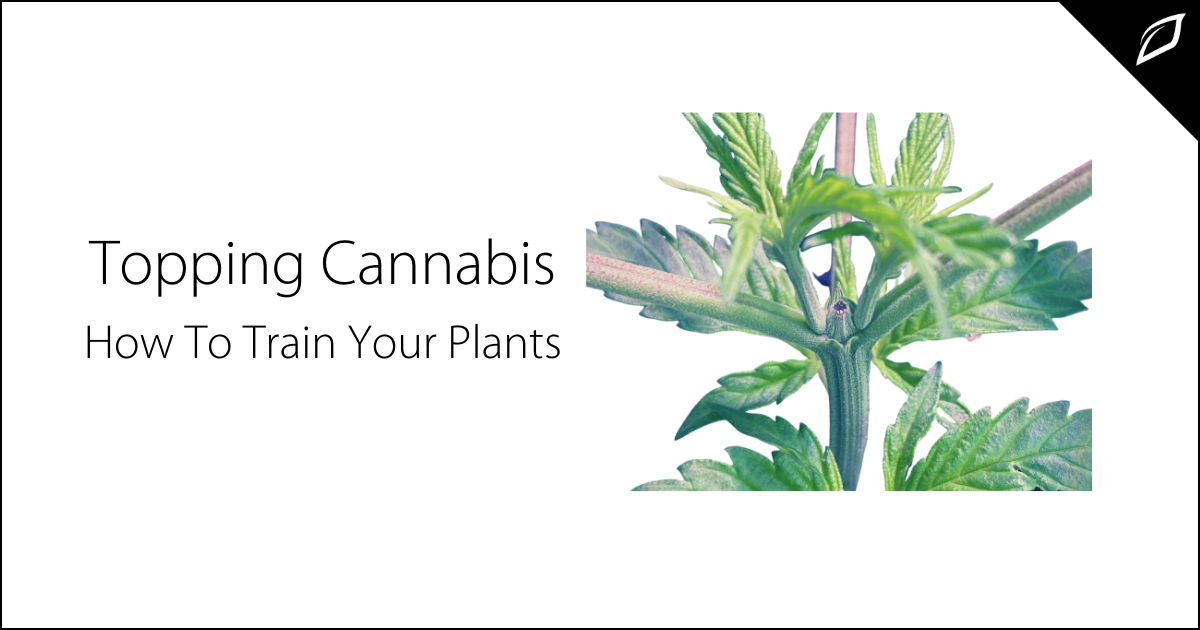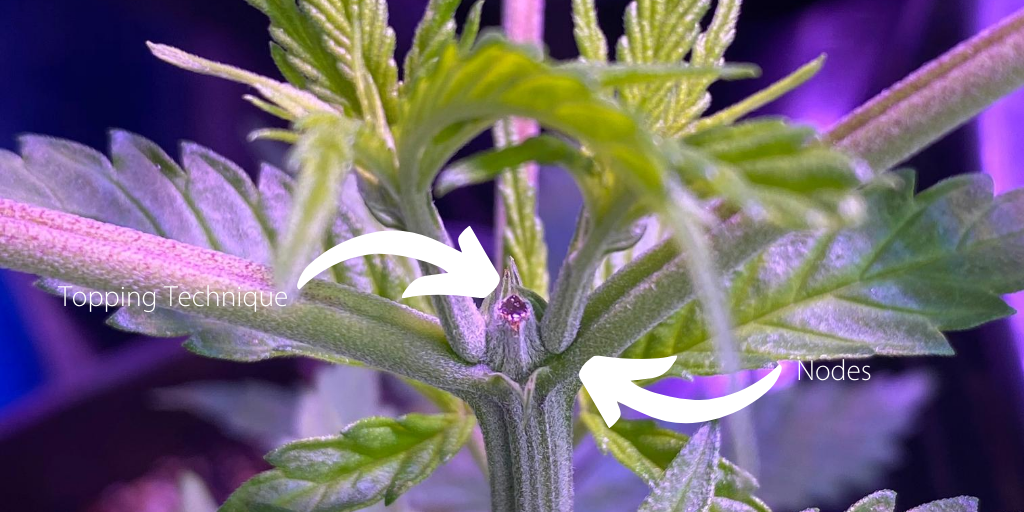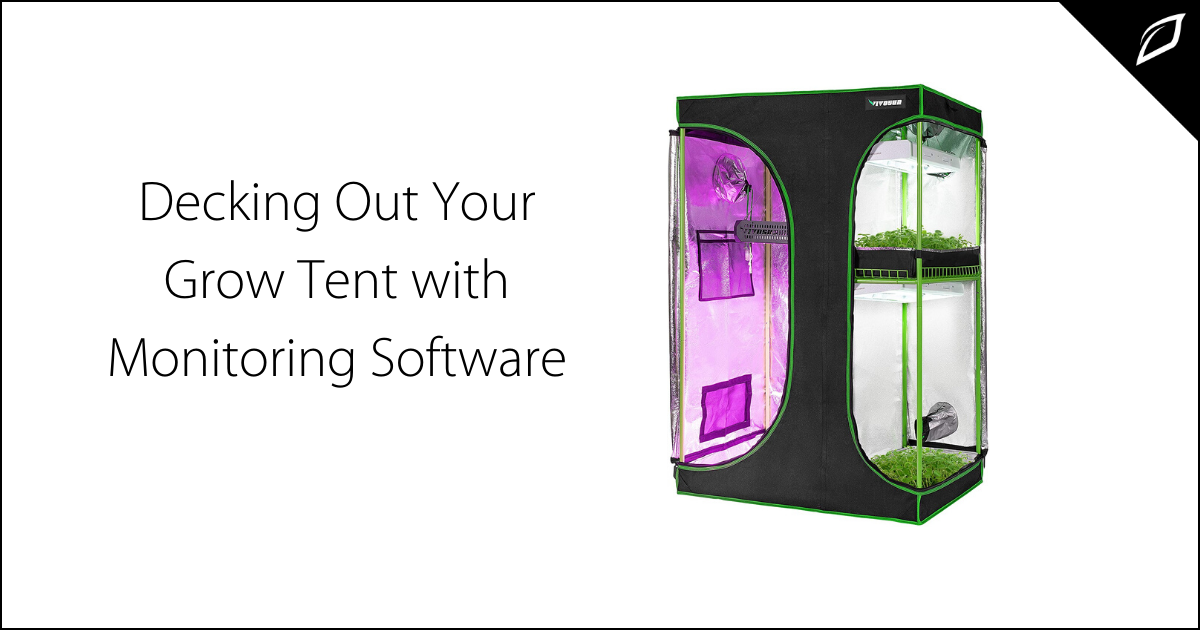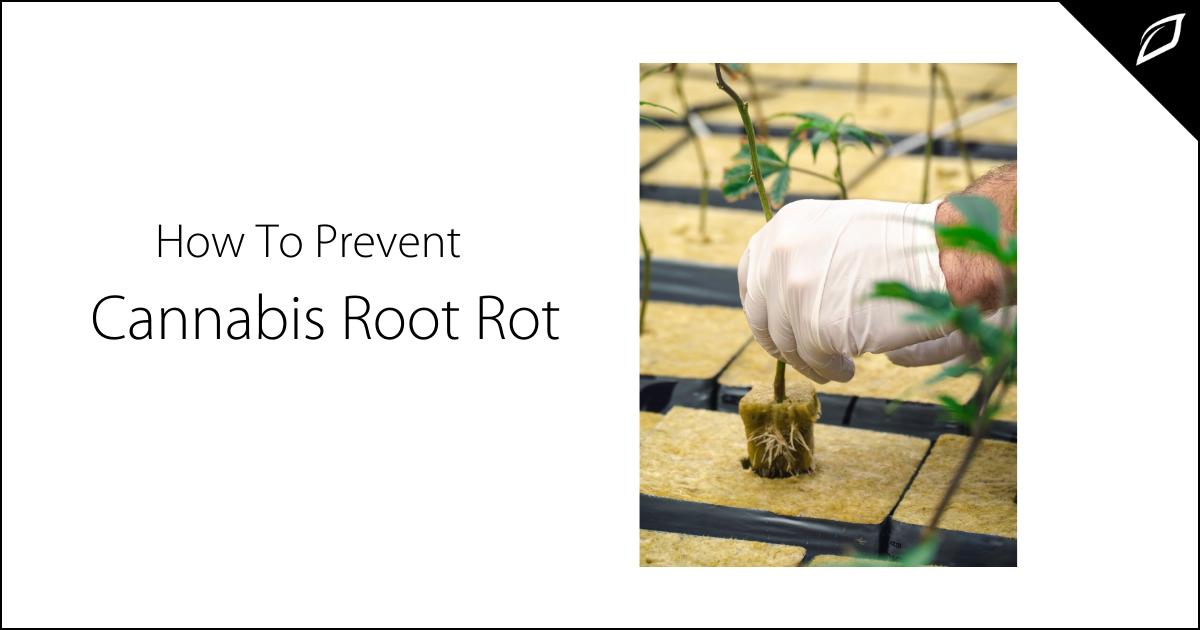Decking Out Your Grow Tent with Monitoring Software
For many startup cannabis growers, a grow tent offers an agile and economical way to get a crop under cultivation quickly and easily. To make the...


How To Train Your Plants
Topping is a fundamental tool used to train plants. It enables growers to force plants to grow horizontally instead of vertically, making the most efficient use of available lighting. Topping is a simple way to increase yields by removing the tip of the top of the plant growth, allowing it to send vital energy out to lower nodes, encouraging growth outwards, instead of up.
Cannabis plants typically grow tall and skinny, more like a tree than a bush. Topping diverts resources to lower nodes, effectively encouraging horizontal growth by allowing lower branches access to available light.
Topping cannabis plants can be done whether you're growing indoors or outside. Unfortunately, topping your cannabis plants is a "traumatic" training technique. Your plants need to be healthy before topping so they can heal from the trauma associated with this particular training technique.
It is recommended that you wait until your plants have at least four nodes before topping them, and most growers recommend topping the plant above the sixth node. Nodes are the part of a plant that connects new stem offshoots with older growth, which can form a branch, a leaf, or in the case of cannabis plants, a bud.
Another critically important aspect of topping is the tool you use. Some people use their fingernails to pinch off the tip of the plant, while others use razor blades or tweezers. Regardless of what tool you decide to use, it's critical that you sterilize your tool of choice. This can mitigate the risk of infection from dirty tools. Done correctly topping is a significant method to fill in the canopy faster and reduce the amount of time the plant spends in the vegetative state. Typically cannabis plants can spend anywhere between two weeks and six months in the vegetative state depending on environmental conditions.
Limiting the time in the vegetative state decreases the amount of time until harvest, but it's important to plan for the healing process by introducing a 'recovery' nutrient recipe after topping. During recovery, the plant will divert energy for growth to compensate for the trauma, as the plant grows, more cola emerges from the node just below the topping point. Colas are composed of tightly woven teardrop-shaped buds that can grow 24 inches when grown in a greenhouse setting. This central flower cluster forms along the upper portion of the main stems and large branches in a mature female cannabis plant.
Topping your cannabis plants is a great way to increase yield, decrease height, and make plants easier to work with, especially in indoor cultivation with limited space. If you're nervous about crop loss, you can always start out slowly by topping just a few plants. Experimenting on a small scale will allow time to work out the process and allow you to see how it works without risking your entire crop.


For many startup cannabis growers, a grow tent offers an agile and economical way to get a crop under cultivation quickly and easily. To make the...

What goes on above the soil line often is a reflection of what’s happening underground. If you observe wilting, drooping leaves on a cannabis...

Sustainability in farming is about more than saving precious resources like water; it's about creating a growing environment that takes the guesswork...